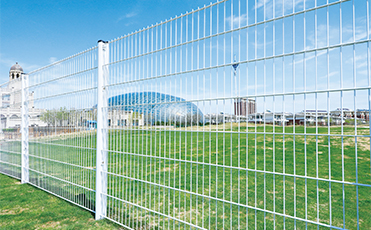nails for slate tiles
Dez . 19, 2024 01:00
Nails for Slate Tiles Choosing the Right Fasteners for Your Roofing Project
When it comes to roofing solutions, slate tiles remain a popular choice among homeowners due to their durability, aesthetic appeal, and longevity. However, one crucial aspect of installing slate tiles that often gets overlooked is the type of nails or fasteners used for securing these heavy tiles in place. Using the right nails is essential for ensuring the integrity of the roof and maximizing the lifespan of the installation. In this article, we will explore the types of nails suitable for slate tiles, their advantages, and best practices for installation.
Understanding Slate Tiles
Slate tiles are known for their natural beauty and range of colors, offering a classic and timeless look for any roof. They are made from sedimentary stone that undergoes a metamorphic process, resulting in a strong and resilient material. However, due to their weight, slate tiles require specific types of nails that can adequately support and anchor them without compromising the roof's structural integrity.
Types of Nails for Slate Tile Installation
1. Copper Nails Copper nails are the most recommended option for securing slate tiles. Their durability and resistance to corrosion make them ideal for a long-lasting roofing solution. Copper nails can withstand harsh weather conditions without rusting, which is vital since a roof is constantly exposed to the elements. Additionally, copper nails are known for their excellent holding capability, ensuring that slate tiles remain securely attached even in high winds.
2. Stainless Steel Nails If copper nails are not available or budget constraints come into play, stainless steel nails are a reliable alternative. They also provide good resistance to corrosion, especially when coated with a layer to enhance their longevity. However, it's important to choose high-quality stainless steel nails, as some lower-grade options can corrode over time, leading to potential roof failures.
3. Galvanized Steel Nails While galvanized steel nails can be used for slate tile installation, they are not as durable as copper or stainless steel options. Galvanization protects the steel from rust, but over years of exposure, the coating can wear off, leading to corrosion. If choosing galvanized nails, it is crucial to select those specifically designed for roofing applications, commonly referred to as “heavy-gauge” nails, to provide added strength.
nails for slate tiles

Best Practices for Installing Slate Tiles with Nails
1. Spacing and Placement When installing slate tiles, pay careful attention to how nails are spaced. Typically, nails should be driven through the head of the slate tile and into the underlayment below. A common practice is to use two nails per tile, ensuring they are spaced sufficiently apart to allow for proper water drainage while still providing a secure hold.
2. Nail Length The length of the nails is equally important. For standard slate tiles, nails should be at least 1.5 to 2 inches long, ensuring they penetrate deep enough into the decking for a secure hold. Using nails that are too short can result in tiles becoming loose or shifting over time.
3. Avoid Over-driving When nailing down slate tiles, avoid over-driving the nails, as this can damage the tile and reduce its effectiveness in keeping the slate securely fastened. The nail should be driven flush with the surface of the slate tile but never beyond it.
4. Regular Inspections After the installation of slate tiles, regular inspections are essential to ensure that all fasteners are in good condition and that no tiles have become loose. Promptly addressing any issues can prevent more significant problems down the line.
Conclusion
Choosing the right nails for installing slate tiles is critical for ensuring a durable and structurally sound roof. Opting for copper or stainless steel nails, understanding proper installation practices, and performing regular maintenance can greatly enhance the lifespan and effectiveness of your slate roofing. By paying attention to these details, homeowners can enjoy the timeless beauty and resilience of slate tiles for many years to come.




















